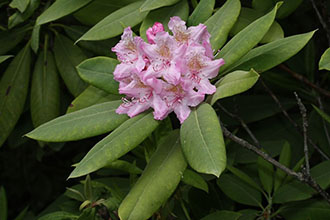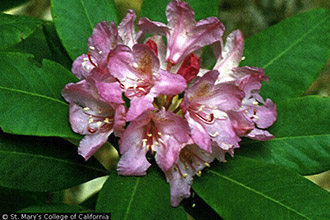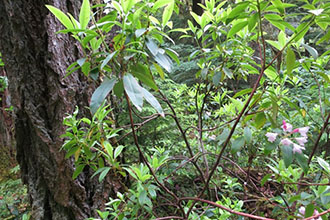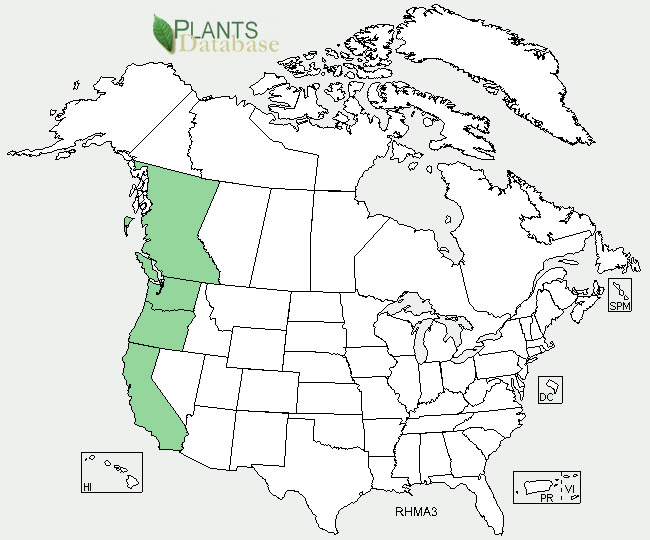Shrubs or trees, to 5 m, sometimes rhizomatous. Stems: bark smooth to vertically furrowed, shredding; twigs with basally branched, crisped/matted, eglandular hairs, very quickly glabrate. Leaves persistent; petiole glabrous; blade elliptic to slightly ovate or obovate, (6-)8.5-14(-20) × 2.5-5.5(-7.5) cm, thick, coriaceous, margins entire, plane to revolute, glabrous, apex acute to obtuse or slightly acuminate, surfaces scattered eglandular-hairy (hairs branched basally, crisped, very quickly deciduous), abaxial surface ± smooth. Floral bud scales multicellular eglandular-hairy (hairs branched basally), and unicellular-hairy (hairs short to elongate) abaxially, margins eglandular-hairy (hairs branched). Inflorescences 10-20-flowered; bracts similar to bud scales. Pedicels 30-60 mm, glabrous. Flowers opening after development of leaves (of flowering shoots), erect to horizontal, fragrant; calyx lobes 1-1.5 mm, glabrous, except margins eglandular- and stipitate-glandular-hairy; corolla white to pink or rose-purple, with yellowish green spots on upper lobe, broadly campanulate, 24-48 mm, outer surface glabrous, petals connate, lobes 14-30 mm, tube gradually expanding into lobes, 10-23 mm; stamens 10, included, ± unequal, 16-37 mm. Capsules borne on erect pedicels, 13-25 × 4-7 mm, eglandular-hairy (hairs ferruginous, branched or unbranched) and, often, stipitate-glandular-hairy. Seeds without distinct tails, flattened portion of testa well developed at each end; testa expanded, dorsiventrally flattened, loose.



